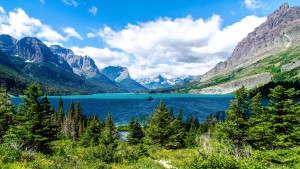Adventurers

https://assets3.thrillist.com/v1/image/1470542/size/tmg-gift_guide_variable/the-best-hikes-in-all-50-states
“In every walk with nature one receives far more than he seeks.” John Muir
Hello everyone! I am extremely excited to begin my new blog topic this semester. I’m moving on from the topic I explored Fall semester which was LEED certified buildings to another topic I’m inexpressibly passionate about: backpacking. I hope you can see the slight connection between these two topics as clearly as I can. I believe that any architect, client, or company that is willing to dedicate time and money to create or commission a LEED certifiable building is working to protect nature, the very thing that backpacking honors. I think that exploring the beauty and wonder of the great outdoors in ways as simple as walking through it inspires humans to work in different ways to protect it- sustainable architecture being one of those ways. Without further ado, let’s become adventurers.

https://upload.wikimedia.org/wikipedia/en/thumb/6/61/Appalachian_Mountains.jpg/640px-Appalachian_Mountains.jpg
When I was 2 years old, my parents took me on my first backpacking trip to Glacier National Park. Along with the three of us came our German Shepard, Isaac. They carried the tent, sleeping bags, clothes, food, extra supplies, and me on their backs for 4 days through extremes of climate varying from sunny, summer weather to unexpected snow. I rode on their backs across beautiful mountaintops and vistas. I may not remember this trip, but I think my passion for the outdoors was cemented on this very hike. How could it not be with views like this?
Now, as a college freshman, I have grand ambitions to work my way up to trekking extreme distances; both the Appalachian Trail (2,190 mi) and Pacific Crest Trail (2,663 mi) are on my bucket list. To think about spending months alone in the woods is both unbelievably appealing and utterly terrifying. I would consider myself a fairly novice backpacker; I just started planning and hiking without my experienced parents this summer. Yet, I always feel the most content when I’m on the trail, so I want to improve until I’m able to plan a trip and do something I’m passionate about without being afraid that I’m not experienced enough. To start, I have to be extremely familiar with the planning aspect of backpacking.
Last week, I had the amazing opportunity to sit in on a presentation by Dave Gantz at Penn State Outing Club. Gantz is an experienced backpacker who has hiked the Appalachian Trail multiple times, the Pacific Crest Trail, and the Vermont Long Trail. It was so informational and inspiring to hear him speak; I want to share what he had to say with you.
Here’s what he had to say with a few of my own comments thrown in for good measure:
- In order to be comfortable hiking a long distance, it’s important you practice hiking short ones. It’s absolutely necessary to get in shape and break in your body. You must know if your body hurts because it’s simply sore and fatigued or because you’re actually injured.
- To have a successful hike, it’s important to determine your goals for the trip. This is especially true if you are hiking with partners. When in the woods, it’s important that everyone is on the same page. Once your goals for the trip are established, including distance, terrain, duration, etc., it’s time to pick a trail. The internet, or blogs such as this one, are good ways to find a trail that works for you.
- After determining the hike you want to take, it’s time to buy some maps and guidebooks. In Pennsylvania, my favorite maps are purple lizard maps. When hiking longer distances, guidebooks can be ripped into sections so that you don’t have to carry an entire book when you only need a few pages.
- Now it’s important to develop a gear list and a budget. From my own experience, I suggest you never bring anything that has only 1 function. In later posts, I’ll touch on this subject again and give some examples of what to bring and what to leave home. A budget will include transportation, food, and any nights that you want to get off the trail and take a break and a shower in a hotel. On average, it costs about $1.50 per mile.
- Finally, you must plan out the itinerary. This includes the miles per day that is dependent on terrain, nearby towns, and predicted weather, among other variables.
Obviously, these five steps are very generalized and the work behind each of them is extensive. It will take practice to feel comfortable going through each of them, but that’s exactly what I’ll do on my next posts. Each post will be an adventure; stay tuned for some ready-made plans for beautiful and breathtaking hikes from all over the world.
Ciao!
Audrey
Leave a Reply
You must be logged in to post a comment.


2 Responses to “Adventurers”
This is a really interesting post! I really liked all the details and advice that you included. The pictures are also very beautiful. I’ve never gone hiking before, but I really want to go now!
I loved the variety in this post. Firstly, I think your topic is very interesting and its so cool how you know so much about it! I liked how you shared your first experience with hiking and developed your goals and wishes later in the post. Your tips from Gantz are extremely insightful, it really proves how prepared you need to be hike. I look forward to reading your other posts as I want to be more outdoorsy and go on more adventures!